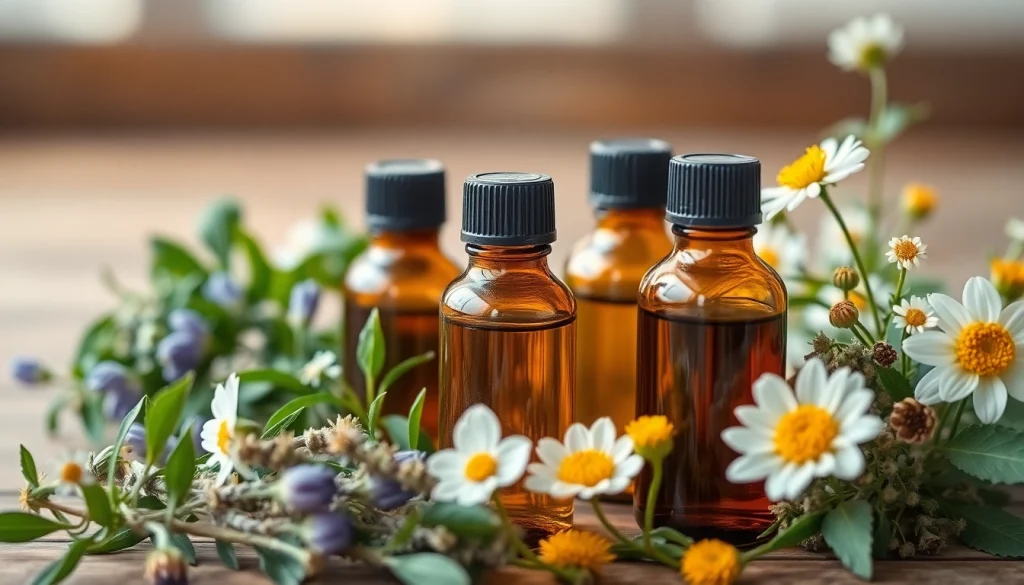
Understanding Essential Oils
What Are Essential Oils?
Essential oils are concentrated extracts derived from various parts of plants, capturing the plant’s unique fragrance, aroma, and beneficial properties. They are obtained through methods such as steam distillation, cold pressing, or solvent extraction. These oils are composed of numerous chemical compounds, each contributing to their specific characteristics. Essential oils are highly potent and are used across various applications, from aromatherapy to skincare. Their popularity has surged in recent years due to increasing awareness of their potential health benefits and natural origins. For those interested in exploring this aromatic world, understanding the basics of essential oils is a great start.
Types of Essential Oils
There are hundreds of essential oils available, each with its unique properties and benefits. However, they can be broadly categorized into several types:
- Single Note Oils: These are derived from one specific plant and have a unique aroma, such as lavender, tea tree, or peppermint.
- Blended Oils: These are combinations of two or more essential oils tailored for specific uses, like stress relief or calming effects.
- Citrus Oils: Extracted from citrus fruits, oils like lemon, orange, and bergamot are known for their uplifting and refreshing scents.
- Herbal Oils: Oils derived from herbs, such as rosemary and thyme, often have medicinal qualities and can be used for healing.
Benefits of Using Essential Oils
Essential oils are renowned not only for their aromatic qualities but also for their therapeutic benefits. Research supports their use in various settings, including:
- Stress Relief: Oils such as lavender and chamomile are commonly used to promote relaxation and reduce anxiety.
- Pain Relief: Essential oils like peppermint and eucalyptus may help alleviate headaches and muscle pain.
- Improved Sleep: Certain oils can foster better sleep quality, aiding individuals who struggle with insomnia.
- Skin Health: Many essential oils possess antimicrobial or anti-inflammatory properties, enhancing skincare routines.
The integration of essential oils into holistic health practices fosters wellness and quality of life improvements. Understanding these benefits can empower individuals to use essential oils more effectively.
How to Choose Quality Essential Oils
Identifying Pure Essential Oils
When selecting essential oils, purity is paramount. Pure essential oils are free of synthetic additives or fillers. To identify quality oils, look for:
- Latin Names: Genuine oils will list their botanical names, ensuring transparency regarding their origin.
- Country of Origin: Quality oils usually specify where the plants were grown, as the environment can affect their efficacy.
- Extraction Method: Cold-pressed or steam distilled methods tend to produce higher quality oils than those extracted using solvents.
Reading Essential Oil Labels
Understanding labels is essential for making informed purchases. Key elements to examine include:
- Contents: Always check for a list of constituents to ensure there are no artificial additives.
- Purity Statements: Products labeled as ‘100% pure’ or ‘therapeutic grade’ often indicate higher-quality oils.
- Expiration Dates: Natural oils do have shelf lives; ensure you purchase oils that are within their usable dates.
Understanding Sourcing and Production
The source of the essential oil significantly impacts its quality. Ethical and sustainable farming practices enhance the oil’s purity, potency, and effectiveness. Investigate the brand’s sourcing practices, such as:
- Organic Certification: Organic oils are grown without harmful pesticides or chemicals, ensuring higher quality.
- Fair Trade Practices: Supporting companies that engage in fair labor practices contributes to the well-being of communities involved in oil production.
Safety and Usage Guidelines
Essential Oil Application Methods
There are several methods for applying essential oils, which can be tailored to individual preferences and desired outcomes. Common application methods include:
- Aromatherapy Diffusion: Using a diffuser to disperse oils into the air can create a fragrant environment.
- Topical Application: Oils can be diluted with carrier oils and applied to the skin for localized benefits. Always perform a patch test first to check for sensitivities.
- Baths: Adding oils to bathwater can create a soothing experience; however, proper dilution with a dispersant is crucial to avoid skin irritation.
Common Safety Precautions
While essential oils are natural, they must be used with caution. Consider the following safety measures:
- Consultation: Always consult a healthcare provider before beginning any new essential oil regimen, especially for pregnant women, children, or individuals with underlying health conditions.
- Storage: Essential oils should be stored in a cool, dark place to maintain their efficacy.
- Patch Testing: Perform skin tests to identify any potential allergic reactions before widespread application.
Dosages and Dilutions
The potency of essential oils means that proper dilution is crucial. Guidelines for dilution include:
- Topical Use: A standard dilution ratio is 2-3% for adults, which equals about 12 drops of essential oil per ounce of carrier oil.
- Children and Sensitive Individuals: A more diluted ratio of about 1% (6 drops per ounce) is recommended.
Integrating Essential Oils into Your Daily Routine
Creating a Relaxing Environment
Essential oils can be powerful tools for enhancing your home environment and creating spaces that encourage relaxation. Here are some tips on how to do this:
- Diffuser Blends: Experiment with different blends in your diffuser to find the aroma that best helps you decompress after a long day.
- Potpourri or Sachets: Create natural air fresheners using dried herbs and essential oils, enhancing your living space while adding a pleasant fragrance.
Essential Oils for Home Use
In addition to personal use, essential oils can also serve practical purposes in the home, such as:
- Cleaning Agent: Use oils like tea tree or lemon in homemade cleaning solutions for their antimicrobial properties.
- Pest Repellent: Certain essential oils can repel insects; for instance, citronella is effective against mosquitoes.
Using Essential Oils in Skincare
Many individuals have incorporated essential oils into their skincare routines due to the beneficial properties of certain oils. For instance:
- Tea Tree Oil: Known for its antimicrobial properties, it can help with acne treatment.
- Lavender Oil: Recognized for its calming qualities, lavender can soothe irritated skin and promote healing.
Advanced Techniques in Aromatherapy
Blending Essential Oils for Custom Scents
Creating personalized blends can enhance the aromatherapy experience. Here’s how to blend effectively:
- Choose a Base: Begin with a base note that lingers, such as sandalwood or cedarwood.
- Add Middle and Top Notes: Middle notes like lavender and top notes like lemon can balance the base and create a well-rounded scent.
- Test and Adjust: Blend small test batches, adjusting ratios based on your preferences.
Essential Oils and Meditation
Incorporating essential oils into meditation practices can enhance focus and relaxation. Techniques include:
- Inhalation: Inhale calming oils like frankincense or sandalwood before starting your practice.
- Topical Application: Apply oils like lavender to pulse points to enhance relaxation during meditation.
Potential Therapeutic Uses of Essential Oils
The therapeutic benefits of essential oils are vast, with studies indicating potential uses for:
- Stress Management: Oils like bergamot and chamomile have shown promise in reducing stress and anxiety.
- Support during Illness: Eucalyptus and peppermint can help relieve congestion and should be considered during cold and flu season.






